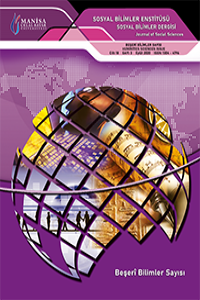Öz
Five kinds of neys are mostly used today which are performed both as solo and in accompaniment. These are the mansur (D-yegâh), which also gives its name to the tunings in the Classical Turkish Music theory, each of which is also a kind of ney, the kiz (E-hüseyniaşiran), supurde (G-rast), mustahsen (F balance '4 commas' sharp-irak) and bolahenk (A-dugah). These types of ney can be modified according to the exercise or can be used by transposition of different tunings with a single ney. At the same time, this is considered an indicator of mastery indicator the ney. In this study, the Dede Efendi's Rast Kar-i Nâtik has been chosen as an exemplary work in order to have many maqam passes and to provide the opportunity to the transposition of different curtains with this feature. The selected sample work was passed on to the bolahenk tuning with the kiz ney and the passages of the maqam were analyzed. In the study, suggestions were made in order to overcome technical difficulties in terms of transposition of the ney.
Anahtar Kelimeler
Kaynakça
- Referans1 Karasar, N. (2011). BİLİMSEL ARAŞTIRMA YÖNTEMİ. Ankara: Nobel Yayıncılık Referans2 Köroğlu, N. O. (2018). Niyazi SAYIN Tavrını Kazandırmaya Yönelik NEY ALIŞTIRMALARI VE ETÜTLERİ. Manisa: CBÜ Yayınları Referans3 Özkan, İ. H. (2007). Türk Mûsıkîsi Nazariyatı ve Usûlleri Kudüm Velveleleri. İstanbul: Ötüken Neşriyat Referans4 Öztuna, Y. (2000). Türk Mûsikîsi Kavram ve Terimleri Ansiklopedisi. Ankara: Atatürk Kültür Merkezi Başkanlığı Yayınları Referans5 Salgar, M. F. (1995). Ölümünün Yüzellinci Yılında DEDE EFENDİ Hayatı – Sanatı – Eserleri. İstanbul: Ötüken Neşriyat Referans6 Sarı, A. (2012). Türk Müziği Çalgıları Ud Tanbur Kanun Kemençe Ney Kudüm. İstanbul: Nota Yayıncılık
Öz
Hem solo hem de eşlik sazı olarak icra edilen neyin, günümüzde çoğunlukla beş çeşidi kullanılmaktadır. Bunlar Klasik Türk Müziği teorisindeki akortlara adını veren aynı zamanda birer ney çeşidi de olan mansur (yegâh), kız (hüseyni aşîran), süpürde (rast), müstahsen (ırak) ve bolahenk (dügâh) neylerdir. İcra edilen akorda göre bu ney çeşitlerinden uygun olanı kullanılabileceği gibi farklı akortlardaki icralarda tek bir ney, göçürme yapılarak da kullanılabilir. Aynı zamanda bu durum neyde bir ustalık göstergesi olarak kabul edilir. Çalışmada; Dede Efendi’nin Rast Kâr-ı Nâtık eseri, içerisinde birçok makam geçkisi barındırması ve bu özelliği ile farklı perdeler üzerinde göçürme yapma imkânı sağlaması açısından örnek eser olarak seçilmiştir. Seçilen örnek eser kız ney ile icrada bolahenk akorda göçürülerek notaya alınmış ve yapılan makam geçkileri analiz edilmiştir. Çalışmada ayrıca neyde göçürme icra konusunda teknik zorlukların aşılmasına yönelik önerilerde bulunulmuştur.
Anahtar Kelimeler
Kız Ney Neyde Göçürme Bolahenk Akort Dede Efendi Rast Kâr-ı Nâtık
Kaynakça
- Referans1 Karasar, N. (2011). BİLİMSEL ARAŞTIRMA YÖNTEMİ. Ankara: Nobel Yayıncılık Referans2 Köroğlu, N. O. (2018). Niyazi SAYIN Tavrını Kazandırmaya Yönelik NEY ALIŞTIRMALARI VE ETÜTLERİ. Manisa: CBÜ Yayınları Referans3 Özkan, İ. H. (2007). Türk Mûsıkîsi Nazariyatı ve Usûlleri Kudüm Velveleleri. İstanbul: Ötüken Neşriyat Referans4 Öztuna, Y. (2000). Türk Mûsikîsi Kavram ve Terimleri Ansiklopedisi. Ankara: Atatürk Kültür Merkezi Başkanlığı Yayınları Referans5 Salgar, M. F. (1995). Ölümünün Yüzellinci Yılında DEDE EFENDİ Hayatı – Sanatı – Eserleri. İstanbul: Ötüken Neşriyat Referans6 Sarı, A. (2012). Türk Müziği Çalgıları Ud Tanbur Kanun Kemençe Ney Kudüm. İstanbul: Nota Yayıncılık
Ayrıntılar
| Birincil Dil | Türkçe |
|---|---|
| Bölüm | Beşeri Bilimler Sayısı |
| Yazarlar | |
| Yayımlanma Tarihi | 25 Eylül 2020 |
| Yayımlandığı Sayı | Yıl 2020 Cilt: 18 Sayı: 3 |


